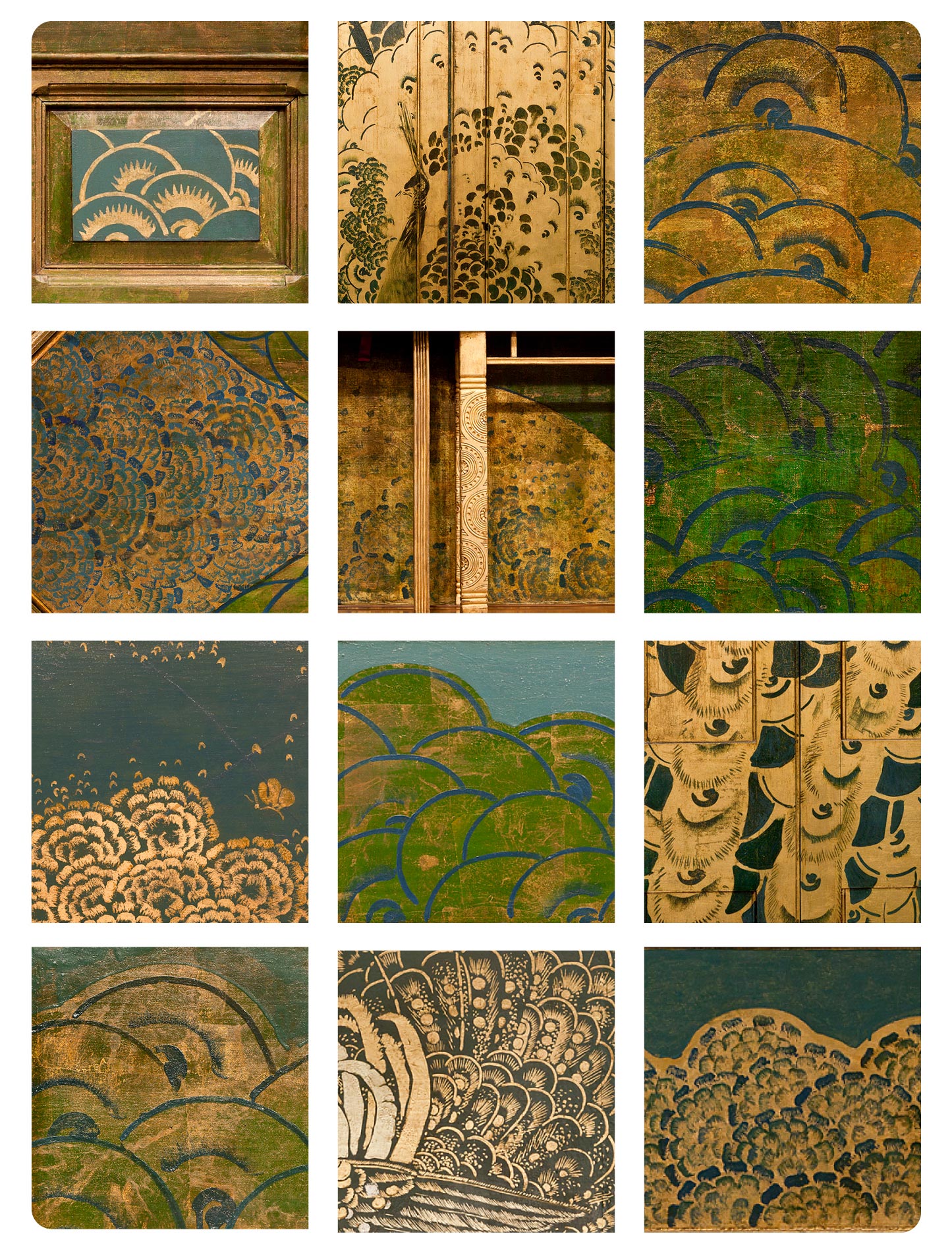Try Slow Looking with 9 Guided Activities
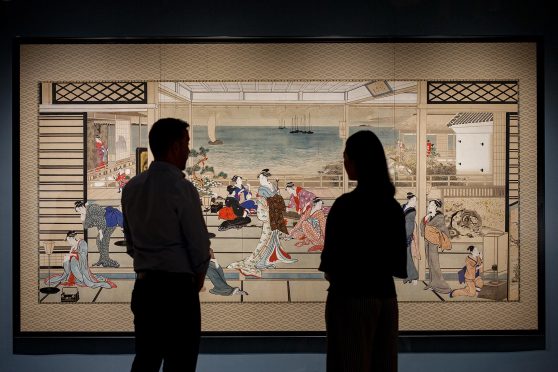
March 14, 2025 | National Museum of Asian Art
Did you know that, on average, people spend less than thirty seconds with an artwork or other museum object? Our museum has a large collection, and it can feel stressful to try and see everything at once. That’s why we recommend slow looking.
What is slow looking?

Slow looking is the practice of pausing and spending time looking closely at something. When you slow down in a museum, you devote more time and attention to fewer artworks or objects. It’s all about quality, not quantity.
Slow looking sparks curiosity and creativity and can help you feel more relaxed and present. This practice can also help you to engage more deeply with the art you’re looking at. Enjoying a museum visit through slow looking can be a way to unplug from the fast pace of daily life, and it can provide similar benefits to going on a long walk or a hike.
How long should I look?
If you’re new to slow looking, try starting with three to five minutes. Just like stretching a muscle, you’re stretching your attention span with slow looking. Once you get more used to it, try spending up to fifteen to twenty minutes with an object.
Try the guided exercises below
It can be hard to stay focused, especially when you’re doing something as abstract as looking at art. Using a guided activity can take some of the pressure off by giving you some direction. Below, we’ve gathered six activities that you can try at any museum. Plus, we have three more activities tailored to works at the National Museum of Asian Art!
Try these activities on your own or with a friend. You’re allowed to bring pencils into the museum galleries to write notes or sketch.
Share your sketches, poems, or connections with us! Tag @NatAsianArt on social media, or use the hashtag #SmithsonianAsianArt.
6 Slow Looking Activities to Try in Any Museum

Colors, Shapes, Lines
Choose an object and let your eyes wander freely over it for one minute. What colors do you see? What shapes do you see? What types of lines do you see?
Looking 5 × 2
- Look at an object quietly for at least thirty seconds, letting your eyes wander.
- List five words or phrases about any aspect of the object.
- Repeat steps 1 and 2.
Making Comparisons
Choose a work of art and spend some time looking at it. If you have some paper and a pencil, make a quick sketch of the artwork.
As you walk through the museum, look for other artworks that are similar in some way to the artwork you picked originally. Consider materials, use, colors, themes, or how the object makes you feel.
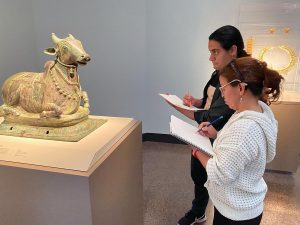
Sketch
Sketching is another way of seeing. Sketch an entire object or just detail a pattern from one. Don’t worry how it looks. Just sketch what you see.
What did you discover through sketching? What did sketching make you wonder about this work of art?
Feel uncomfortable sketching by yourself in the museum? Join one of our monthly Sketch & Discover tours!
See, Think, Wonder
What do you see? What does this work of art make you think about? What do you see that makes you say that? What does this work of art make you wonder?
Does this work of art connect to something you have seen or experienced before?
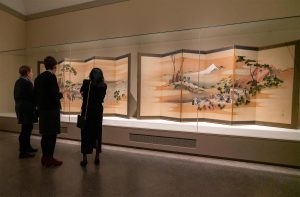
Step Inside
Find a landscape and imagine you could step inside of it. Tap into your senses. What do you imagine you’d see, hear, smell, feel, or taste in this landscape? Maybe write a sensory poem that captures what it feels like to be inside this work of art.
3 NMAA Slow Looking Activities
Treasure Cabinet
Qing-dynasty emperors often designed treasure cabinets to display ceramics and other treasures they collected. The palaces created pieces of furniture with multiple shelves and cubbies called duobaoge—“a cabinet for myriad treasures.” These treasures included objects from different time periods and countries and made of different materials. Find an example of this in gallery 13.
Imagine you could create your own treasure cabinet. What would you keep in it?
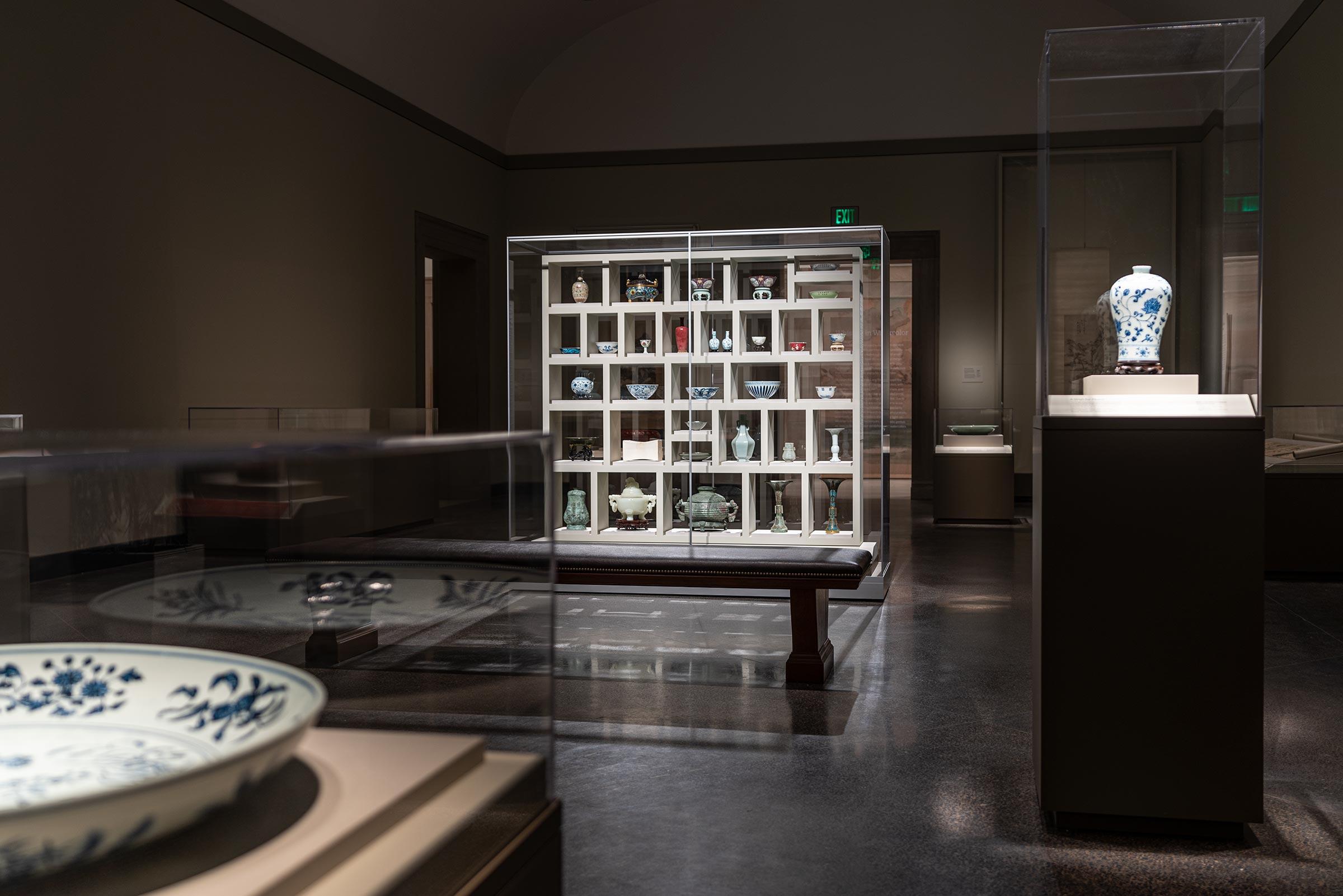
Guardian Figures
Find our Guardian Figures in the West Building. How do they make you feel? You can even try posing like them—do the poses make you feel any differently?
Imagine you had to create a Guardian Figure to protect your home, school, or another special place. What would it look like?

Find the Peacock Room Designs
You can find our famous Peacock Room in the West Building, gallery 12. Artist James McNeill Whistler designed this room. Across the space, he painted peacock feathers in many different ways. Try to find all the designs shown here.
